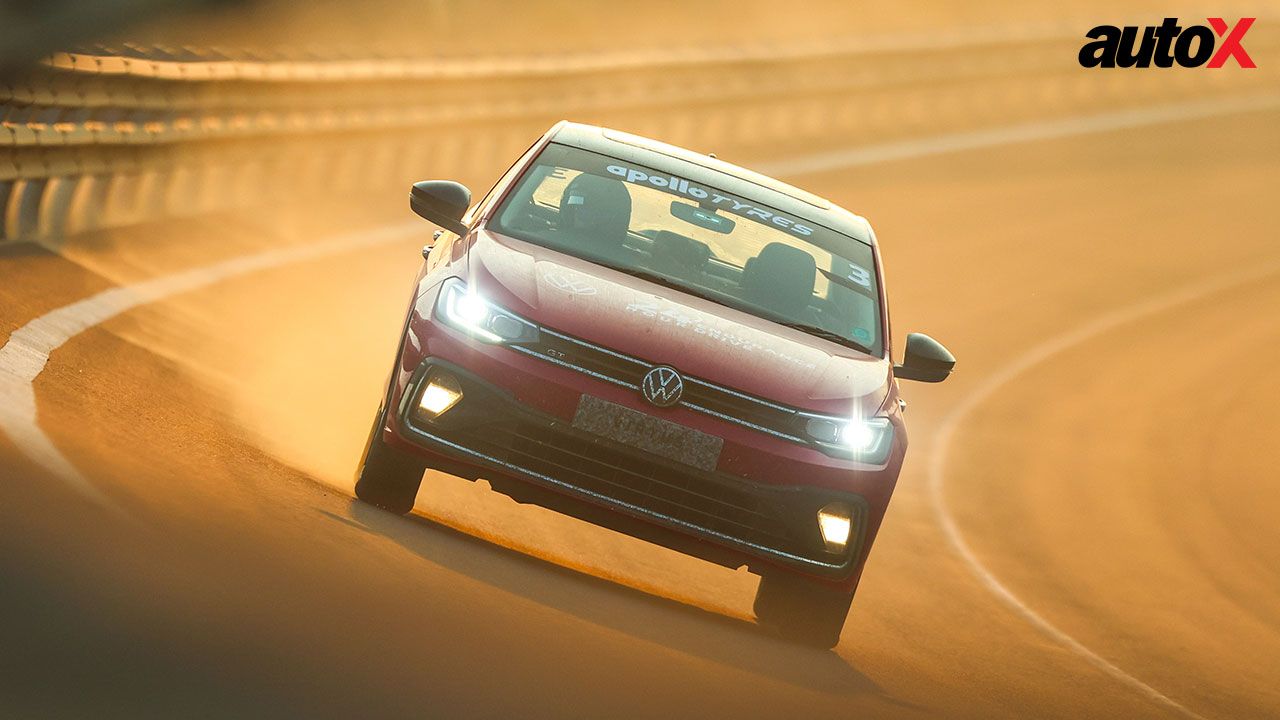
We’re sure that you’ve seen the Volkswagen Virtus and Taigun numerous times on these pages in the past. We, at autoX, simply love these German-engineered Volkswagen machines – they never fail to put a smile on our faces every time we get into the driver’s seat. However, we will talk about something different today, something capable of inspiring sheer awe in anyone reading these words. While we’ve long recognised these machine’s incredible capabilities, what unfolded was unexpectedly astonishing. In simple terms, five Volkswagen cars – three Virtus and two Taigun models – embarked on an ultramarathon, and the rest, as they say, was history.
Playing Ground
The stage for this feat was set at the NATRAX (National Automotive Test Tracks) facility in Pithampur, Madhya Pradesh. It features an impressive 11.3km long oval track with elongated bankings, which allows cars to maintain their top speeds even around corners. It stands as one of the few places in India where cars can approach their top speeds and maintain them consistently, and it was paramount for what Volkswagen India was about to undertake.
The Plan
The idea was simple – four of the five Volkswagens in question would run continuously for 24 hours, hovering near or at their top speed. The fifth Volkswagen, a 1.0-litre Taigun equipped with an automatic transmission, had a slightly different task. Its top speed was deliberately capped, for it aimed to set a different record, i.e. attaining the best fuel efficiency figures over a period of 24 hours.
Max Attack
The record-breaking distance was achieved by a Virtus GT Plus DSG, equipped with VW’s 1.5-litre TSI Evo engine, which was mated to a seven-speed DSG transmission. To give you a better perspective, this engine makes 148bhp and 250Nm of torque, which is good enough to propel the Virtus GT to a top speed of over 200km/h. And that’s precisely what the team at Volkswagen India accomplished – the Virtus GT maintained a steady speed of around 200km/h throughout the 24-hour duration, covering an astonishing distance of 4654.48km by the end. Divide it by 24 and the Virtus maintained an average speed of 193.94km/h (including pit-stop time).
Changing Styles
While the 1.5 TSI engine in the Virtus was roaring at the NATRAX test track, the smaller 1.0 TSI engine was busy setting records of its own. You see, Volkswagen uses this engine in the Taigun as well, and when paired with an automatic transmission, the Taigun in question covered an impressive 4423.82km in a span of 24 hours. It maintained an average speed of 184.33km/h, including the pit-stop time. The Virtus also features the same engine and this time, it was paired with a manual transmission. it covered a total of 4357.21km in 24 hours, at an average speed of 181.55km/h, including the pit-stop time. All of this culminated in it setting the record for the greatest distance covered by a car (in their respective segments) with an engine capacity of under 1.0 litre in 24 hours.
Sipping on Gas
While three of the five cars set distance records, one of the Taiguns was assigned a different challenge – to achieve the best fuel efficiency. For this run, Volkswagen used the 1.0 TSI engine paired with an automatic transmission. Its top speed was set at 55km/h – at this mark the Taigun would engage sixth gear and would continue to maintain the speed. The outcome was remarkable – the Taigun covered a total distance of 1305km, achieving an impressive fuel efficiency of 29.8km/l!
Indeed, a remarkable feat, considering it’s a turbocharged engine, mated to a six-speed torque converter automatic transmission.
Chequered Flag
In the gruelling 24-hour endurance run, the VW team subjected the Virtus and the Taigun to rigorous tests, and both the cars emerged triumphant, adorned with proud badges of honour.
While you are not likely to encounter challenges of this magnitude on public roads, its immensely satisfying to know that these cars were run at max performance for 24 Hours non-stop and this proves the durability and reliability of German engineering standards.


























Write your Comment